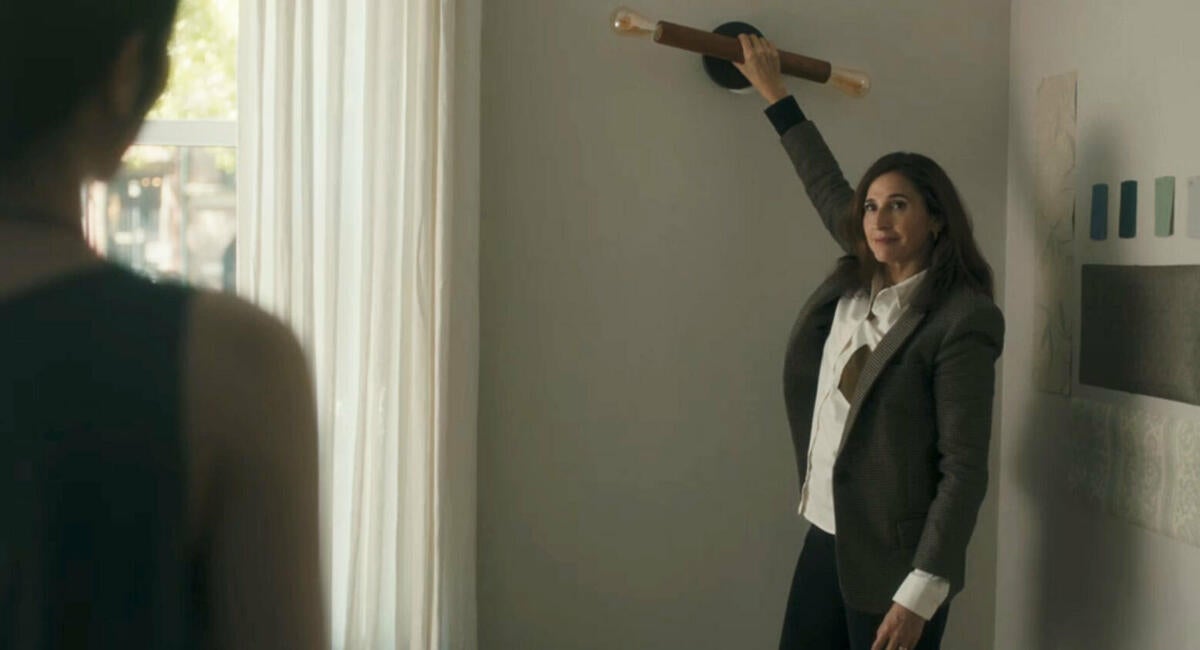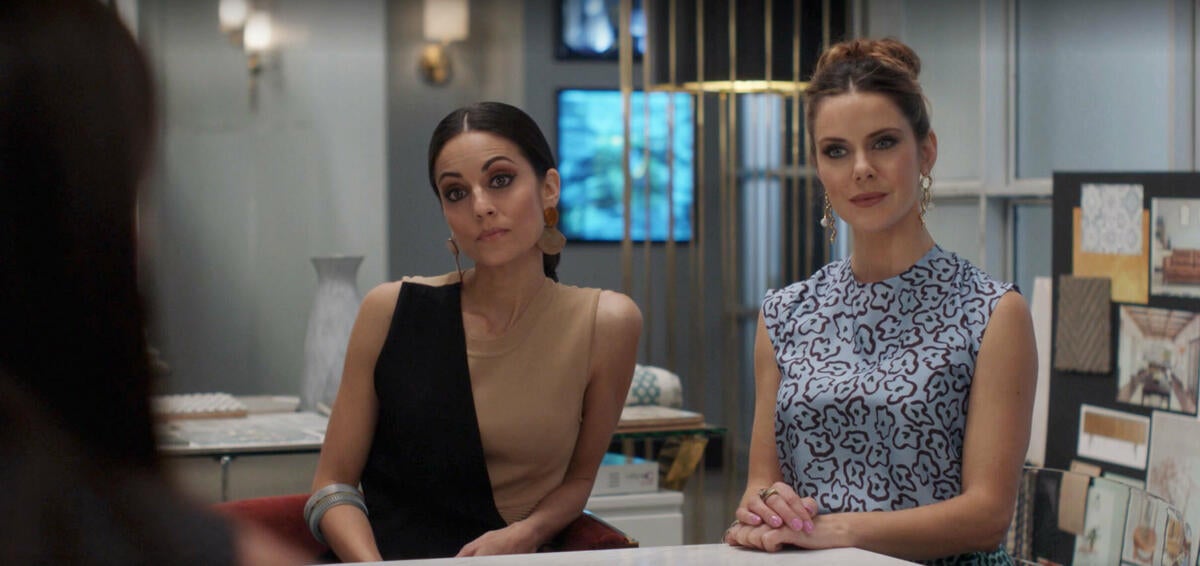HBO’s Succession is, among other things, 29 episodes of big-budget, high-caliber design porn. Over the course of four seasons, as the fictional Roy clan battles for control of the family media empire, they bicker and snipe in an endless stream of over-the-top homes: A stoic midcentury palace on a Los Angeles hillside, a classic Upper East Side town house, a 17th century Italian villa, each one more worthy of a shelter magazine cover than the last. The show became so known for its parade of ultraluxe interiors that AD ranked them.
But amid all that interior splendor, the show itself features only a single dismissive line about actual interior designers. In the third season, Logan Roy’s second ex-wife, Caroline, makes a wry joke about her new fiancé’s arriviste daughters: “They’re both in interior design. They’re unemployed.”
It’s not Succession’s job to portray the interior design profession in a good light. But that one line represents a broader truth. Over the past two decades, interior design has increasingly slipped into the bloodstream of American popular culture. But despite that, on TV and in movies, designers themselves are still usually reductive clichés. Hollywood loves design. Why not designers?

There are a few common variations of the designer character onscreen. One is the superficial ditz—a trope recently employed in Jon Hamm’s detective comedy Confess, Fletch in the character of “lifestyle curator” Tatiana Tressley, played by actress Lucy Punch. In one scene, Punch walks Hamm through one of her designs, spouting empty clichés:
“Every single piece I curate is bespoke.”
“What does ‘bespoke’ mean again?” Hamm asks.
“It’s when an object bespeaks,” Punch replies.
Then there’s the Devil Wears Prada–esque designer: glamorous and slightly cruel. Take, for example, the firm in Showtime’s The Affair, where Helen Solloway, played by Maura Tierney, is mocked for her low Instagram follower count. (Tierney’s character, an affluent housewife who stumbles into design through social connections, is another trope all its own—see Cate Blanchett’s character in Blue Jasmine.)
Even when designers are portrayed with a little more humanity, the job is played for laughs. In Nicole Holofcener’s recent comedy You Hurt My Feelings, actress Michaela Watkins portrays a New York designer dealing with some career angst. While the character is nuanced, the design work mostly consists of lugging a series of sconces to a picky client’s apartment. (Has she not heard of SketchUp?) Later, Watkins’s character commiserates with her sister, played by Julia Louis-Dreyfus.
“I need to do something else, something meaningful,” says Watkins.
“What you do is kind of meaningful,” replies Louis-Dreyfus.
“To who?”
“No one.”
Louis-Dreyfus is joking. Or is she?
To be fair, Hollywood is not known for depicting any career particularly accurately. But when screenwriters and producers give a character a job, they’re saying something about both the person and the profession. When the job is interior designer, that “something” is not always flattering.
“The character is incredibly glamorous and is just walking in and telling people what to do without any kind of discussion, or it’s the complete opposite,” says Virginia designer Jess Harrell. “It’s just never quite right.”

Why has pop culture’s appreciation for designers lagged behind its appreciation of design? The simplest explanation is probably that designers are convenient scapegoats.
Hollywood, especially recently, has a love-hate relationship with the affluent (Beef, Billions, White Lotus, Loot, Succession, the list goes on). The world of the rich, it seems, makes for compelling entertainment. But there’s something in America’s cultural DNA that needs to simultaneously critique wealth as emblematic of corruption, superficiality or another moral failing. As a country, we like to watch wealthy characters. We don’t necessarily like them.
For screenwriters and producers, interior designers are handy tools for quickly sketching the excesses of the affluent. Want to write an unlikeable mogul whose wealth has split them from reality? Give them an interior designer driveling about custom hand-curated organically sourced drawer pulls.
Lurking behind that is persistent sexism and homophobia. It’s no secret that work largely performed by women and gay men tends to be culturally devalued and cast as superficial or silly—that’s true in life, and it’s certainly true in Hollywood. Compare, for example, on-screen designers with on-screen architects.
“Architect” is such a common job for a male protagonist that a few years ago GQ ran an article simply titled “Why Are Architects So Revered in Movies?” The piece listed 20 or so films with a heroic architect character—from Sleepless in Seattle to The Towering Inferno to Love Actually—and it would be easy to double that count without breaking a sweat, especially if you added TV to the mix.
In Hollywood, architects tend to be bright, capable, driven, successful (without being out-of-touch rich themselves) and—almost always—men. Rom-com writers especially seem to love architects as male love interests. On screen, they’re creative without being flighty, smart without being nerdy, and they always seem to have plenty of time to meet for a coffee or take a walk on that one bridge in Central Park.
Hollywood also gives architects a courtesy it doesn’t usually extend to designers: It shows them at work, whether it’s Tom Hanks dealing with a chaotic renovation in Sleepless in Seattle or Josh Radnor grinding out the GNB skyscraper in How I Met Your Mother. Montages of late nights at a drawing board, job site meetings with hard hats—on-screen architects get process. Compare that with Bronson Pinchot’s character, Duarto Feliz, in The First Wives Club, a cartoonish decorator whose methods seem to mostly involve striding into rooms and saying things like, “That chair is agony!”
“On TV, it never seems like you actually see the work—it’s just, ‘This pillow right there and those over there,’” says Harrell. “You don’t see the effort and dedication that goes into finding the essence of who the client is and what their needs are.”
“The role of designers is definitely downgraded on TV,” adds Seattle designer Lauren Caron. “And there’s a very strong distinction between who’s an architect and who’s a designer—I don’t think people realize that we do a lot more than just ‘decorate.’ … and that some designers actually make more money than architects.”

Not every on-screen designer is a walking cliché. (A slept-on personal favorite: Sally Field as a competent, successful principal in Mrs. Doubtfire.) But when asked for a positive role model on TV, most designers will reference a sample size of one: Debra Messing as Grace Adler on Will & Grace. The show is rightfully celebrated as breaking ground in its straightforward depiction of gay male characters. It’s also one of the only modern TV shows with a genuine, likable interior designer at its center—before that, you’d have to go back to the 1980s and Designing Women.
Will & Grace doesn’t escape all criticism. “I liked her office with all those drawing boards,” says London designer Jecks Stone. “Though you didn’t see her actually drawing on them enough.” But for many, Grace at the very least put a real human in the role of interior designer.
“She wasn’t always so put-together—things were falling apart, and she was trying to keep her cool,” says designer Abigail Horace of Connecticut firm Casa Marcelo. “I appreciated that it wasn’t this glamorous, perfect thing, which is much more realistic for how this job actually is.”
Will & Grace’s primary run went off the air in 2006—since then, it’s hard to think of another comparable character. It’s also hard to know what exactly it means that Hollywood doesn’t always give interior designers their due. It certainly doesn’t do anything to help manage clients’ expectations about the design process—but most working designers will place the blame for that more on HGTV than on HBO.
“Even on reality shows that are about design, you’ll have celebrity hosts, and when they’re listening to what the designers say, they’ll kind of look at the audience and wink like they’re hearing from the Mad Hatter or something, like it’s nonsense,” says Stone. “It drives me crazy, and they don’t talk to builders the same way.”
It’s undeniable that the boom in home renovation shows—where complete kitchen overhauls take three days and cost $3,000—have had the most obvious effect on the general public’s (mis)understanding of how design works. But movies and scripted TV do something different: They reflect and shape the cultural moment on a deeper, more mythic scale. For better or for worse, Hollywood shows us how we feel about designers.
There’s room for improvement on both fronts. But on the bright side, the preponderance of onscreen designers is, at the very least, educating the public that such a career actually exists. “I feel like 20 years ago, people had no idea what ‘interior designer’ meant as a career at all,” says Horace. “Now I tell people that I’m a designer. They might not totally get all the ins and outs, but they’ll usually say, ‘Oh, cool!’”
Homepage photo: ©Pressmaster/Adobe Stock



























